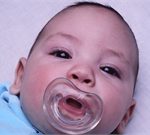Colic and Crying Babies
All babies cry. My apologies to those of you out there who were under a different impression. Babies do not cry to manipulate you – it is their only way of communicating. You will not spoil them by attending to their needs. The crying slowly increases until it reaches a peak at 6-8 weeks, and then it slowly decreases. Almost all babies are fussier in the evening hours, “colic” or not. There are times when you can help, and times when you cannot. This information page is to help you figure out what the cause of your baby’s crying might be, what you can do to help, and when to call your child’s Pediatrician.
Dirty Diapers
Simple and easy to fix! If your baby has a wet or soiled diaper it can cause discomfort and your baby will cry. Have a look and make the change if needed.
Hunger
Babies cry when they are hungry. If your baby did not feed well at the last feeding or spit up/vomited a significant amount after feeding, it’s possible that s/he is hungry again (even if, by the clock/your schedule, it isn’t feeding time). With time you might be able to tell the difference between your baby’s hungry cry and other cries, but initially you may want to look for signs of hunger – rooting (if you stroke the baby’s cheek s/he turns with mouth open in the direction of the cheek that was stroked), smacking of lips, and sucking on hands. If you still aren’t sure you can try to feed and watch your baby’s response.
Fatigue
Tired babies often cry, especially if they are over tired and are unable to go to sleep quickly. Again, with time you might recognize signs that your baby is tired, but in the beginning this can be a challenge. Yawning is an obvious sign, less obvious ones are when your baby turns his/her head back and forth, when s/he tugs on ears or swats at them or grabs at his/her face. Go into a quiet and darker space, talk in a soft voice, swaddle/offer the pacifier if that is your habit, and see if your baby is ready for a nap.
Reflux
If your baby cries while feeding or soon after feeding, arches his/her back a lot, is significantly more fussy lying down than in an upright position, and is spitting up a lot, it’s possible that s/he has gastrointestinal reflux (GERD). This is the baby version of acid reflux, or heartburn, and can be very uncomfortable. If your baby has symptoms of reflux it is better to feed him/her in a more upright position, be conscious about burping (less gas= less reflux), keep the baby upright for at least 30 minutes after a feeding, and give him/her as much belly time as possible. If this does not work, or if your baby is not gaining weight as expected your Pediatrician may have more recommendations regarding feedings and/or possible medications.
Gas
All babies have gas. If your baby is an easy, great burper, s/he might have less gas, but some gas is unavoidable. If you are breastfeeding remember- foods that give you gas (broccoli, sweet potatoes, onions, etc.) are more likely to give your baby gas. It is your choice whether or not to limit those foods in your diet. The best prevention of gas is avoiding gas producing foods and effective burping – this eliminates some of the gas from the stomach before it passes into the intestines. One possible way to decrease gas is something available over the counter called: simethicone, or Mylecon, drops. This is a ‘medication’ that helps create easy-to-pop gas bubbles in the stomach- it helps more gas escape with burping. It is not absorbed by the body at all so is safe to use after every feeding, as needed. A second option for gas management is something called gripe water. This has been around for ages (it was made with alcohol, back in the day—but it’s now alcohol free) and is widely available. Because it is a mixture of herbs and is not regulated by the FDA there is more of a chance of an allergic reaction so you should discuss its use with your Pediatrician, during regular business hours. One additional option for dealing with gas is to use a probiotic, such as lactobacillus. A probiotic replenishes the gut with good bacteria to help with digestion. Again, you can discuss its use and dosage with your Pediatrician during regular office hours.
Constipation
Constipation is very unusual in a baby who is solely breastfed, because breast milk is easily digested. It is more common in formula fed infants. If your baby is having dry, hard balls of stool you can have a look at the constipation page for guidance, and contact your Pediatrician during regular business hours for further advice, if needed.
Allergy/Lactose Intolerance
If your baby has a sensitivity or allergy to something you are eating it may present itself as fussiness/crying. Many people will try to eliminate eggs, nuts and dairy (soy, too, if ambitious) initially to see if that improves their baby’s disposition. If your baby is not gaining weight, is fussy day and night, or has blood in his/her stools, you should contact his/her Pediatrician for evaluation.
Stomach Flu
Unfortunately even babies can get the stomach flu. There is a vaccine available once your baby is 2 months of age, to prevent and minimize stomach flu symptoms. It is given in three doses, at 2, 4 and 6 months of age. Regardless, if your baby is crying/fussy, and has vomiting and/or diarrhea, and is under 4 months of age you should contact his/her Pediatrician. If you have an older child you can find information and suggestions for dealing with the stomach flu on the vomiting information page.
Teething
If your baby is over 2 months of age and is fussy, drooling, gnawing on his/her hands (or yours) then teething is a possibility. Look at your baby’s gums – if you notice any bulging then rub the gums to see if this gives your baby relief. You can also try teething tablets or an icy washcloth for your baby to chew on. On very bad teething days, with your pediatrician’s guidance, you might consider a single dose of acetaminophen (see medication dosing page) to help with the discomfort.
Over-Stimulation
This is similar to the type of crying your baby will do when over-tired. The world is full or sights and sounds and activity. And it can be a lot for any of us to take. It can be completely overwhelming for an infant. Taking your baby into a dimly lit room, rocking and talking softly may all help to calm him/her. White noise – a white noise machine, a humidifier, or a fan – may provide just the right type and amount of noise to be soothing. If your baby enjoys being swaddled and/or if s/he uses a pacifier, you can try to use these as calming aids.
Under-Stimulation
Sometimes babies just need to look around and move. This doesn’t mean that you need to entertain them or hover over them. Simply lay your baby on his/her back on the floor/on a mat and let him/her look around at the world.
Temperature Discomfort
A baby, who is too hot or too cold will cry. It is common for babies’ hands and feet to be cool, so if you are not sure if your baby is cold then reach in under those onesies to feel his/her belly & chest. This will let you know if you need to add or remove a layer. As a rule of thumb – your baby will be comfortable wearing one layer more than you have on.
Discomfort/Pain
If your baby is sensitive to seams or tags s/he might cry. If an insect has bitten him/her, or a piece of hair has become caught around a finger, toe or penis your baby will be in pain. So undress your crying baby and check him/her from top to bottom. Look at fingers, toes, penis and skin all over for signs of redness, irritation or a tourniquet hair. Look at arms and legs and gently squeeze along them to see if there is a specific area of pain, suggesting an injury. You may want to touch your baby’s ears to see if that is bothersome – one sign of a possible ear infection. If you find an area that is specifically painful then you should contact your child’s Pediatrician for guidance.
Colic
Colic is defined by crying that begins at less than 3 weeks of age. It lasts for more than 3 hours per day, at least 3 times a week, and for longer than a 3 week period.
The cause of colic has never been determined, which is why we rarely use the term at our office. It has become a catch-all for crying babies when adults do not know the cause. We believe the crying does have something to do with stomach pain and gas, beginning a cycle of upset, and the things that you can do for Colic are the things that you would do for gas and for over-stimulation. So have a look at those subsections, or at the list below, for suggestions.
What to do if your baby is crying inconsolably:
- Remain calm. Babies sense your energy and anxiety so if you can emit a calm energy it will help. Take a deep breath and do some visualization or put your iPod on with some calming music. A calmer parent makes for a calmer baby/toddler/child/adolescent/teenager!
- Undress and examine your baby from top to bottom.
- Look for insect bites or areas of irritation and redness.
- Look at fingers, toes, and penis for any hair cutting off circulation.
- Check ears, arms, legs for areas of tenderness/pain.
- Try to determine if your baby is tired, hungry, sick, over/under stimulated, gassy or having stomach pain issues, hot/cold, or wet/dirty. It’s a long checklist but it only takes 2-4 minutes to check everything.
- If you check and feel that your baby is physically fine, try to soothe your baby with: swaddle/un-swaddle, feeding, burping, simethicone/gripe water/probiotics/hyaline’s teething tablets, acetaminophen, rocking/soothing, dressing/undressing—whatever feels appropriate.
- Some calming techniques, in summary:
- Motion – in a baby carrier, swinging, dancing with the baby, in a stroller, in the car, in your arms- endlessly walking.
- Noise – usually a deeper rhythmic or humming noise is the most soothing to babies. A fan, ticking clock, dripping water, metronome, or a simple noise machine with white noise, available at many pharmacies or online for less than $20 will suffice. You can also try singing lullabies, shushing, and classical music.
- Visual – to distract a crying baby you can try to put him/her in front of a mirror or in a place where s/he can watch moving traffic, wind in the trees, moving fan blades, or running water.
- Touch – using cream/oil and long strokes to give a gentle massage will often calm a fussy baby. The scent of lavender is soothing if your baby is not sensitive to a scented cream/oil. You can also try skin to skin contact with the baby on your chest, his/her head over your heart – this is warm, comforting, and also provides the rhythmic sound of your heartbeat. Doing this in a bathtub (have someone around who can help get you and the baby out of the bathtub safely) adds the calming of water and more warmth to the touch.
- If your baby is physically fine yet will not stop crying it is OK to put him/her down for a few minutes in the crib and take a break yourself. There is nothing more stressful to hear than your baby’s cry, so taking a break to breathe and calm yourself can only help your baby. If you feel like you are at a breaking point put the baby in the crib and call someone for backup/help.
Contact your baby’s Pediatrician/see a doctor if you notice any of the following:
Fever in a child less than 2 months of age
Blood in Stool
Poor weight gain
Repeated vomiting
A hair tourniquet that you are unable to remove
A bulging fontanelle – if your baby’s soft spot is bulging when your baby is in a semi-reclined position, or is very firmly bulging when lying down and your baby is very fussy/crying you should see a doctor immediately.
If your baby is not eating, sleeping or acting normally
Signs of pain that you cannot fix
If you feel that something is just not right – remember, no one knows your child like you do!
-Monique Araya, MD, FAAP
The medical information on this Web site is provided for educational purposes only. The information provided in this site, or through linkages to other sites, is not a substitute for medical or professional care, and you should not use the information in place of a visit, call consultation or the advice of your physician or other healthcare provider.
If you believe you have a medical emergency you should call 911 or your physician immediately. If you have any questions regarding your health or a medical condition, you should promptly consult your physician.
- Accidental Poisoning
- Bites and Stings
- Burns (and sunburns)
- Childhood Asthma
- Colic and Crying Babies
- Constipation in Children
- Cough & Cold
- Diaper Rash
- Diarrhea
- Ear Pain
- Fever
- Head Trauma and Head Injuries
- Kids and Allergies
- Lice
- Medication Dosages
- Nosebleeds in Children
- Pink Eye and Styes
- Rash
- Scrapes, Cuts and Stitches
- Sudden/Acute Abdominal Pain
- Treating a Common Cold Cough
- Vomiting and Nausea
 High Viral Loads Make Kids ‘Silent Spreaders’ of COVID-19
High Viral Loads Make Kids ‘Silent Spreaders’ of COVID-19 Clotting Tied to COVID-19 May Harm the Placenta
Clotting Tied to COVID-19 May Harm the Placenta ‘Kangaroo Care’ Has Big Health Benefits For Preemies
‘Kangaroo Care’ Has Big Health Benefits For Preemies Babies Are Spared Severe COVID-19 Symptoms
Babies Are Spared Severe COVID-19 Symptoms Sleepless Babies May Face Emotional Troubles as Kids
Sleepless Babies May Face Emotional Troubles as Kids